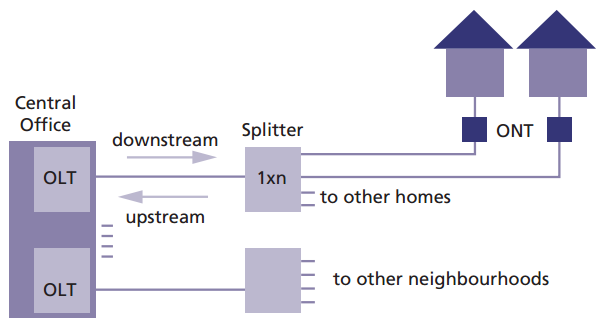The PON architecture comprises an optical line terminal (OLT), based in the central office, and the optical networking terminal (ONT) – sometimes referred to as an optical network unit (ONU) – based on the customer premise.
To connect the OLT and the ONT with data, a fibre-optic cable is used to carry a wavelength downstream. By using a passive splitter (which splits the light wave) the downstream data originating from the OLT can be distributed. A series of passive splitters may have to be located within the PON architecture to reach the required number of customers. This is a point-to-multipoint architecture, sometimes described as a tree.
The upstream data running from the ONT to OLT – which is delivered on a separate wavelength to avoid collisions with the downstream transmission – is aggregated by the same passive splitter unit, which also carries out the recombining function. This enables data to be collected by the OLT over the same single fibre that sends the traffic downstream.
One of the key characteristics of the point-to-multipoint PON is ‘bursty capacity’. This allows operators to allocate extra shares of the downstream bandwidth to users when they need it (on the assumption that not all other customers on the same PON are using their guaranteed bandwidth allocation at that moment in time). The dynamic bandwidth allocation (DBA) capability of the point-tomultipoint PON, say its protagonists, sets it apart from point-to-point PON and AON architectures.
